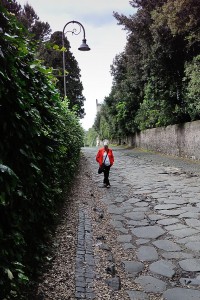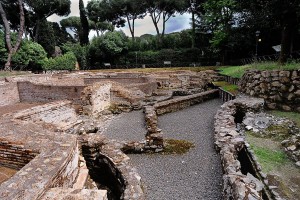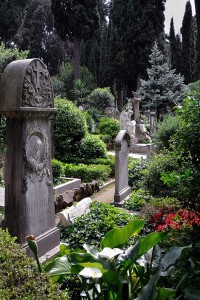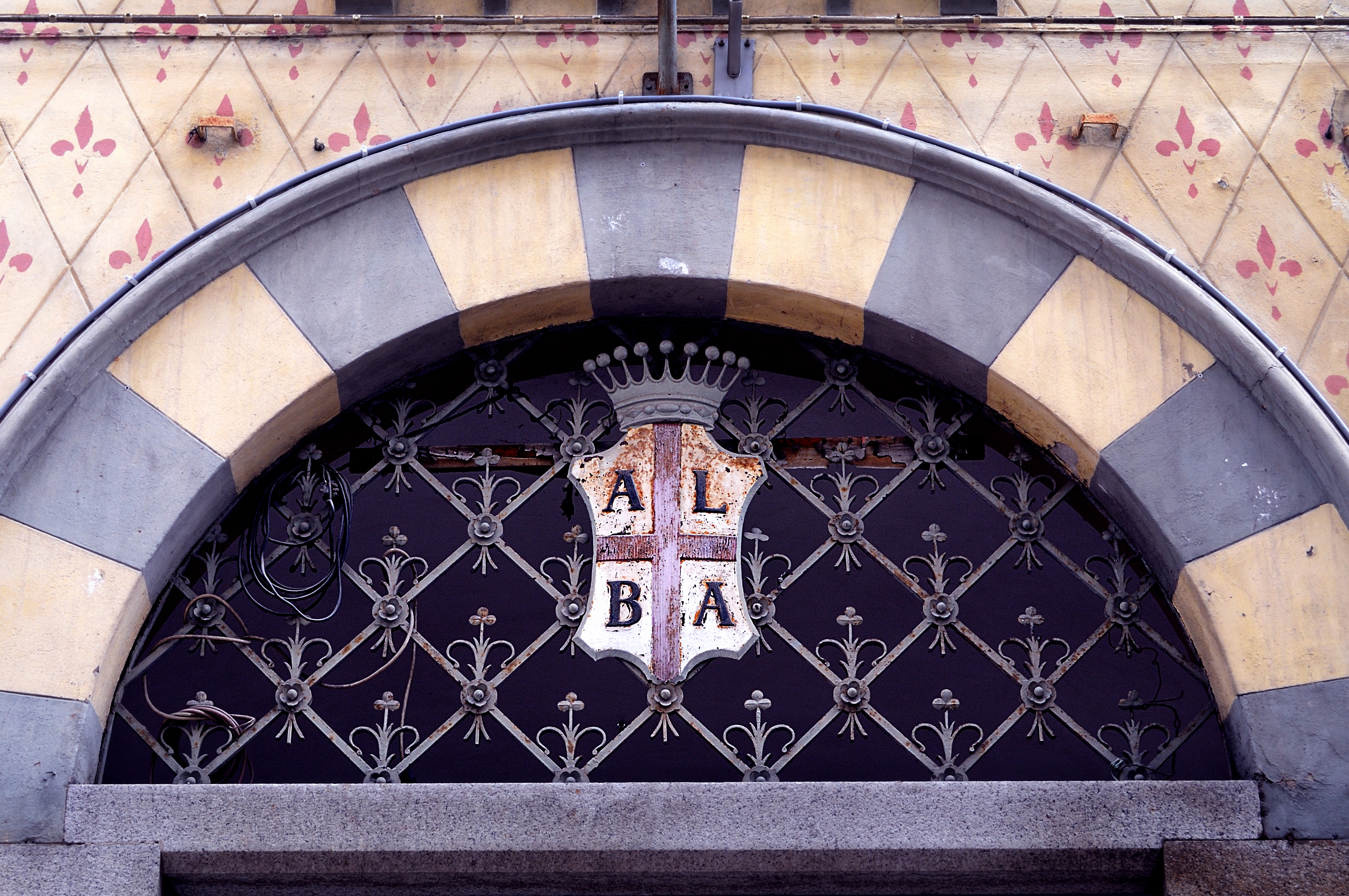Heading off to Rome? Here are a few places you may want to check out. They are a bit off the beaten track but after you have spent a week or two “doing” all the stuff on your “list”, if you haven’t already visited these places, I’m telling you, you need to GO! I don’t think you will be sorry you did!
OSTIA ANTICA, viale dei Romagnoli 717, Ostia
Excavations and a Museum for all us Ancient Rome archaeological fans! Take the M to Pyramide, then head towards the train station “Porta San Paolo” (basically the same building). Hop the train to the Ostia Antica stop, not the Lido, about a 20 minute train ride. There’s a pedestrian overpass that takes you over the highway, from there; it’s a short walk to the site. There probably are bus tours…but we like the adventure of actually finding what we are looking for!
Ostia was Rome’s main port and a busy trading center until the 5th century AD when it went into decline. The “town” now lies 3 miles inland. The ruins, divided into 5 regions, give us a look into life during ancient Roman times. The main road, Decumanus Maximus, runs past the Forum, which contains Ostia’s largest temple and past the restored theatre that is still used for open air concerts in the summer. The road is lined with baths, shops and multi-story buildings where we saw a number of amazing black and white mosaic floors. After three hours wandering and clambering about we wish we could have spent another three hours but we ran out of steam! The site is considered to be very well preserved, even better preserved than Pompeii!
There is a lot of walking involved and there is a cafeteria on site. If one could find a way, safely, to bring a picnic lunch along to enjoy in this amazing place it would be awesome!
VIA ANTICA APPIA AND CAPO DI BIOVE
 Last time we were in Rome Via Antica Appia was on the list but we simply ran out of time, or rather, each day we planned to visit it bloody rained! This trip we had plenty of time to plan around the weather. If you are planning on a meal during your visit, it might be a good idea to do a little research before going. It might be worth looking into to avoid tourist traps! I’ve seen good reviews of Antica Hostaria dei Liberti at #87.
Last time we were in Rome Via Antica Appia was on the list but we simply ran out of time, or rather, each day we planned to visit it bloody rained! This trip we had plenty of time to plan around the weather. If you are planning on a meal during your visit, it might be a good idea to do a little research before going. It might be worth looking into to avoid tourist traps! I’ve seen good reviews of Antica Hostaria dei Liberti at #87.
There are buses that take you to Via Appia Antica and if you are not visiting the Catacombs don’t get off the bus there! Trust me…we made that mistake. We did not want to visit the Catacombs (one of us hates enclosed spaces), which then meant a bit of a hike. The “via” has a lot of traffic during the week and it’s a little nerve wracking dodging cars.
The road was built in 312 BC and extended in 190 BC to the ports of Taranto and Brindisi becoming Rome’s link to its empire to the East. It’s lined with ruined family tombs, decaying monuments and other burial places.
Along the way we came upon the Circo Maxentius where chariot races were held. Pretty amazing to wonder what it must have been like!
As we hiked along, we got hungry and not wanting the usual 3 course Italian lunch that particular day, we opted for a place where we sat outside, under orange trees and had panini, beer and wine. It’s a family owned place, very casual and exactly what we wanted. The very nice owner recommended we visit #222. What with my limited Italian and her limited English, it was a challenge to figure out what the heck she meant by “stop at #222.”
 After lunch we continued our journey along the ancient stones where you really can see the ruts left from carts going up and down the road for all those years! It’s overwhelming.
After lunch we continued our journey along the ancient stones where you really can see the ruts left from carts going up and down the road for all those years! It’s overwhelming.
We continued on to the huge grand Mausoleum of Cecilia Metella, the daughter of a Consul and wife of the son of the famous Marcus Crassus who served under Julius Caesar. Her tomb remains while others have decayed and that makes it a very special place.
Further along and we finally discover what that nice lady meant by #222! In ancient times, wealthy Romans built big villas along the road to probably escape the heat of Rome in summer, where they could catch the breezes. As we discovered, people still have homes there today. #222 turned out to be Capo di Bove an excavated archaeological site of an ancient villa set in a garden containing a number of fantastic modern bronze sculptures executed by Columbian artist/sculptor, Fanor Hernandez.
English Cemetery
 Coming back to M Pyramide from Ostia Antica we decided to check out the Pyramide of Caius Cestiius on Piazzale Ostiense and the Protestant Cemetary; a Roman friend has suggested we not not miss it!
Coming back to M Pyramide from Ostia Antica we decided to check out the Pyramide of Caius Cestiius on Piazzale Ostiense and the Protestant Cemetary; a Roman friend has suggested we not not miss it!
If you have not seen the Pyramid, it was inspired by all the Cleopatra scandals and at the time there was a craze for all things Egyptian. Sound familiar! Caius Cestius commissioned the pyramid as a tomb for himself. It’s set into the Aurelian Wall near Porta San Paolo, built in 12 BC. At the time of our visit it was under renovation like so many other sites we’ve come across.
The Cemetary, officially known as Cimitero Acattolico is on Via di Caio, the street to the right of the Pyramid. The entrance is about ½ block from the Pyramid. Non-Catholics have been buried here since 1738. The cemetery is surrounded by a tall wall and in the oldest part, on the left, as you enter through the gate, is the grave of John Keats, close by the ashes of fellow poet Percy Shelly rest. It is so beautiful, peaceful and serene, full of gorgeous marble sculptures, plants, trees, birds and cats. There is even a donation box for money to feed the cats! We were glad our friend recommended it to us…
Click here for my Tripadvisor review.







